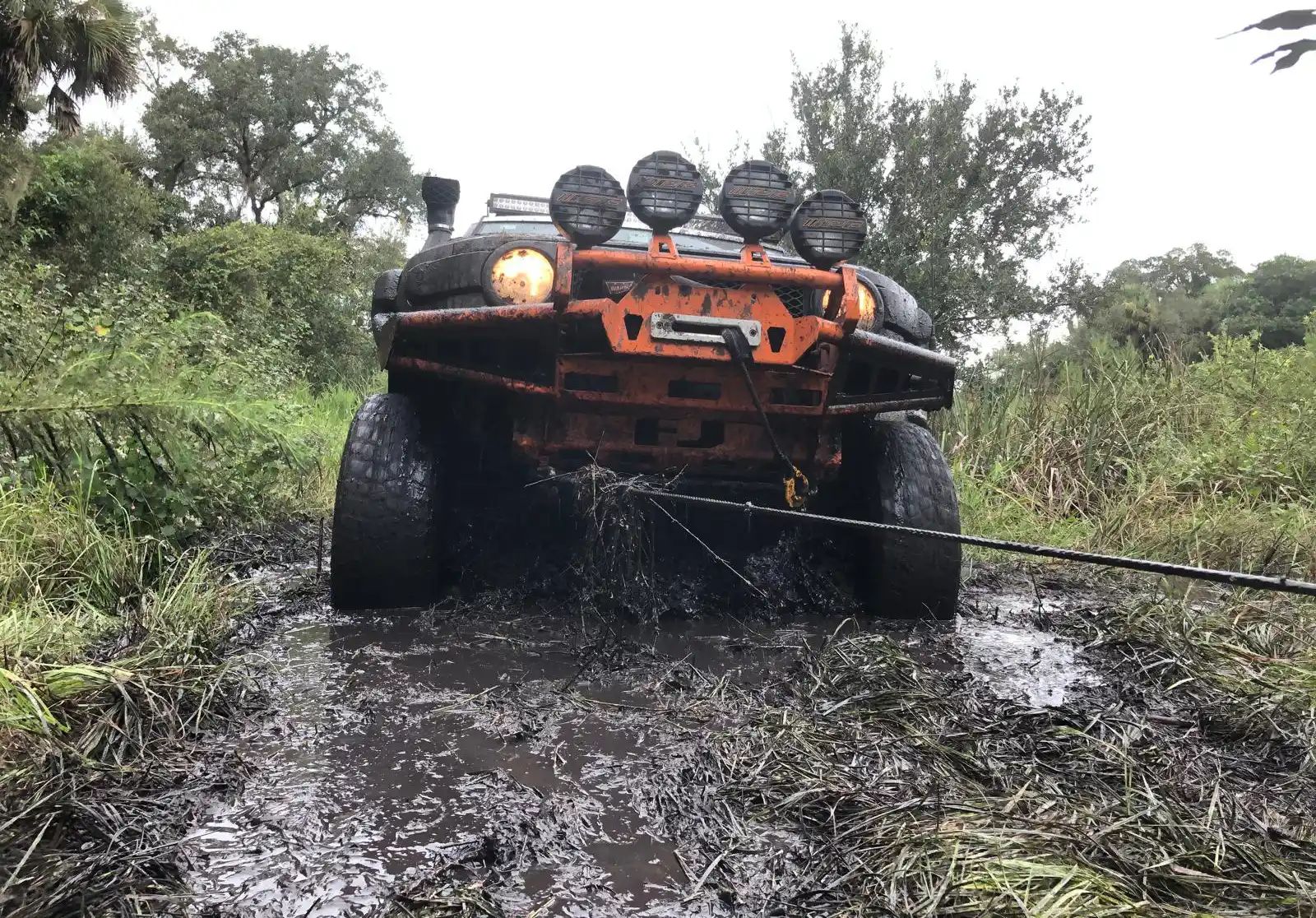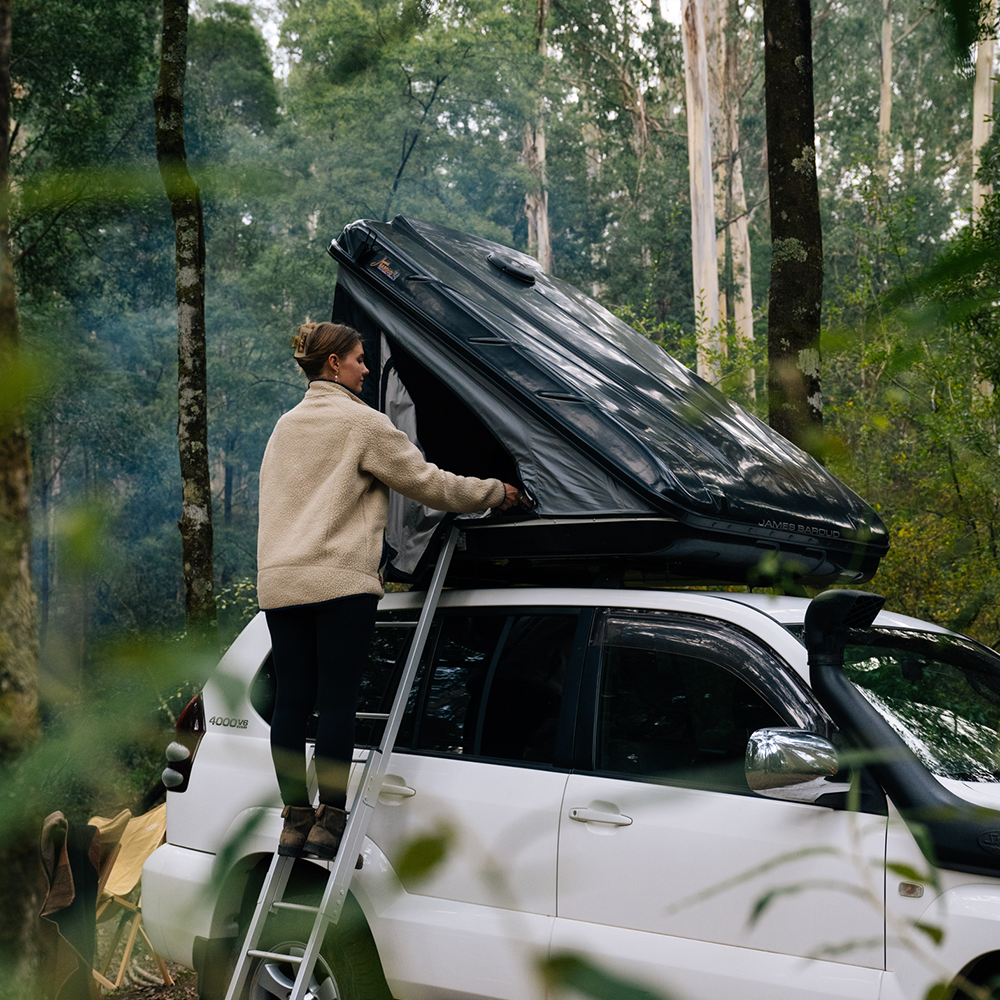
Overlanding Gear: 8 Items Beginners Always Forget
24 Dec, 2024
Overlanding is a lifestyle that involves venturing deep into the backcountry on rugged terrain. If you forget a crucial item, you can’t just pop into a store to get another. Worse, if you need equipment to get out of a jam, help might be hours or even days away.
This is why self-sufficiency is a cornerstone of overlanding: you must be prepared with the right gear for your journey. Here are these commonly-forgotten overlanding gear items, and why you need them.
Also Read: What Is Overlanding?
Navigating water crossings is a common part of the overlanding experience. Muddy puddles can be particularly deceptive: They may seem shallow, but if the ground beneath isn’t compact, your vehicle can quickly sink underneath.
To properly assess whether it’s safe to drive through the water, you may need to step into the water. If you don’t have rubber boots to put on, you’ll have to decide whether you want to re-route or deal with soggy, muddy clothes and shoes for the rest of your journey.
Avoid this dilemma by packing waterproof rubber boots with your overlanding gear. Ideally, the boots should go up to your knees or higher. You can often find good ones in fishing supply stores.

2. A Good Shovel
Even though it may seem basic, a shovel is arguably your most important tool for recovery. And, for overlanders who aren’t ready to invest in a winch or jack yet, a shovel may be their only recovery tool.
Whether or not it is okay to rely solely on a shovel for recovery is debatable, and it depends a lot on your style of adventuring and driving capabilities. However, what isn’t debatable is that your shovel should be capable of serious use. A small, cheap shovel simply won’t cut it when it comes to digging yourself out of a (literal) ditch.
Look for a shovel with:
3. Sturdy Water Containers
You can only survive up to three days without water, so water is essential on all overlanding trips. Because water storage containers can be pricey, this is one area that beginners often try to save money on. Instead, they opt for the cheap water bottles you can find in supermarkets.
The problem with these water bottles is that they are made out of thin plastic. It can easily puncture or burst when bouncing around. The thin plastic also allows vapors to pass through, which is why your potable water can taste like gasoline and dirty socks after a few days in the back of your rig.
A better solution is to buy proper containers designed for long-term water storage. They are made out of thicker, non-porous plastics that can withstand the rigors of the overlanding lifestyle.
Pro Tip
Water tanks are great if you have high water needs, such as for showering. However, you’ll also want to have several smaller containers of potable water. This ensures you still have drinking water if one of your tanks gets damaged.

4. Properly Rated and Sized Fire Extinguisher
Fire might not be the first risk that comes to mind when you think of overlanding, but it’s more common than you’d expect. Driving on rough terrain can cause damage to components like fuel lines. As the NFPA warns about RVs (but also applies to overlanding rigs), auxiliary gear like propane tanks and overloaded electrical systems also increase the risk of fire.
In addition to vehicle fires, backcountry exploration and outdoor cooking increases the likelihood of a wildfire encounter. For these reasons, a fire extinguisher is considered first-order retrievability gear: you should be able to access one immediately, regardless of where you are in or out of the vehicle.
Don’t want to skimp when it comes to crucial safety gear. Choose a fire extinguisher which is at least 5lbs size and rated for A, B, C type fires.
5. Trash Storage
When you are leisurely driving on paved roads, you can get away with putting your trash in plastic bags and tossing them in your back seat or cargo.
This is no longer the case once you get off-road. The rough terrain can make the trash bags roll around and tear open, leaving you with a mess to clean up or bad smells for the rest of your trip.
To prevent this, you’ll need sturdy trash storage containers. Heavy-duty trash bags can work, though you may still want to double-bag. If you have a lot of liquid trash or food scraps, then hard storage containers are better for catching leaks, such as a plastic bin that you secure in your rig so it can’t move around.
Pro Tip
For extended journeys, it’s worth investing in a spare tire trash bag. It allows you to keep trash outside so you don’t have to worry about bad smells.

6. Lots of Extra Towels
Towels are a surprisingly essential overlanding item with multiple uses. The most obvious uses are for towels are:
However, you’ll discover towels are particularly useful in dry, dusty conditions. The dust can get everywhere, even covering your windows and dashboard to the point where you have no visibility. You’ll be grateful that you brought an extra towel so you don’t have to use your shower towel to wipe them down.
Pro Tip
If you wear glasses, pack several small microfiber cloths. Keep them somewhere safe from dust, such as in a plastic baggie kept in a zippered pocket, so you can clean your glasses without scratching the lenses.
7. Grab Bag
In the ideal world, you would always be able to self-recover your rig. However, even experienced overlanders can find themselves so badly stuck that they need to abandon their rig and go get help.
You need to be prepared for this possibility by packing a “grab bag” with basic survival gear. The idea is that you will have everything you need to safely set off on foot, even if you have to walk miles and spend the night outdoors.
Items to Put in Your Grab Bag
8. Hard Copies
Having the right gear is only half the equation: you also have to know how to use it. This is why it’s so important you always test your gear at home before taking it out on a journey.
However, when you are new to overlanding, it’s very easy to forget something. For example, if you don’t have to recover often and are using safety lines instead of dampers, you might forget how to tie a prusik knot.
This isn’t a problem when you’ve got an internet connection: you can just go online and double check how to tie the knot. But, in the backcountry, there’s a good chance you won’t have an internet signal.
A solution? Bring hardcopies.
Hard Copies to Include
Hopefully you will never need to check this information but, if you are unsure about something, you will be glad you have it available.

Want to Improve Your Overlanding Experience?
James Baroud rooftop tents are renown for their craftmanship and features that make life on the road more comfortable. Want to find out more? Just fill the form below with your details and one of our experts will contact you.
